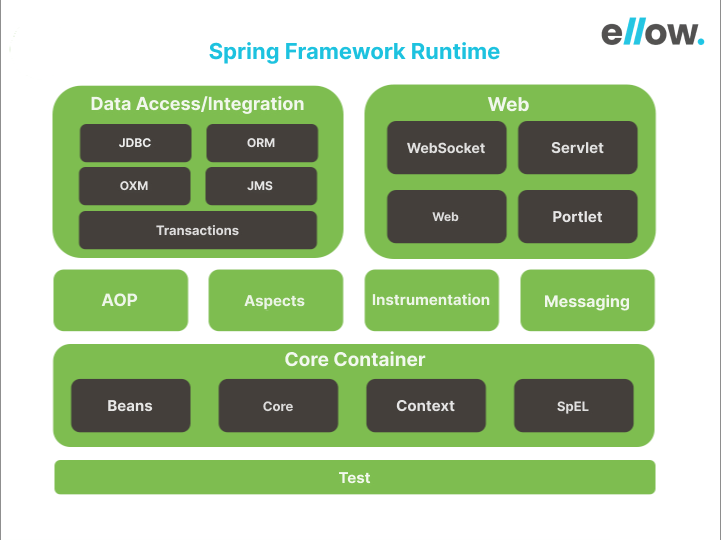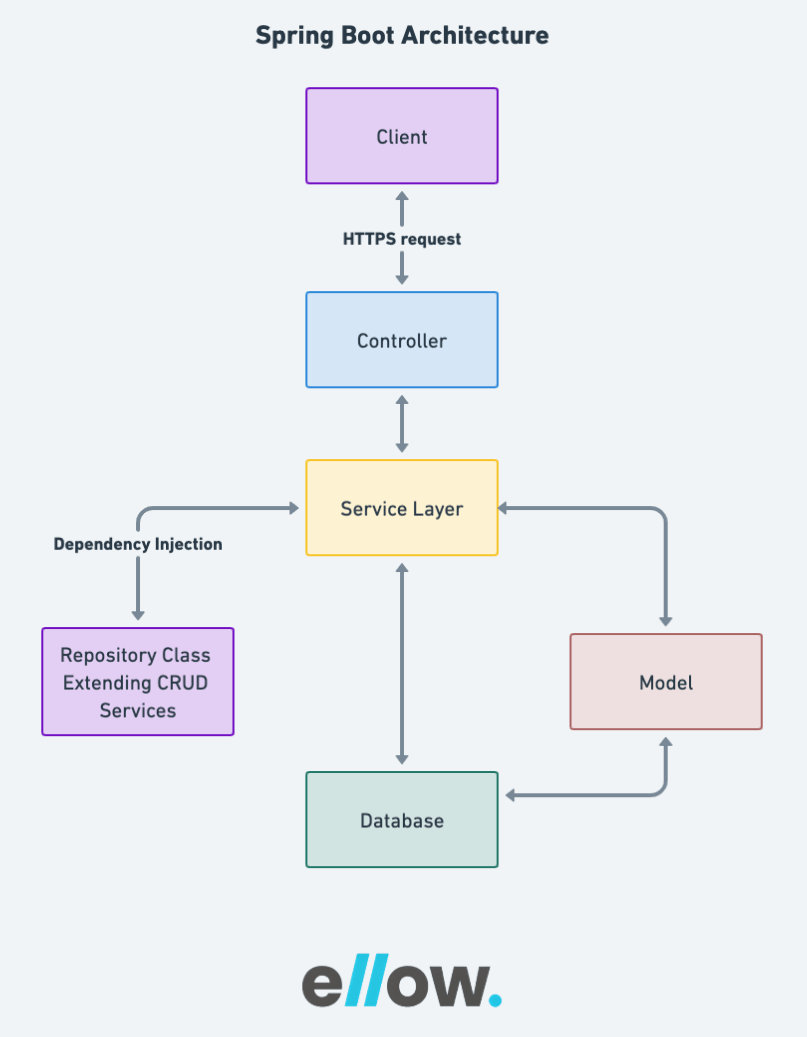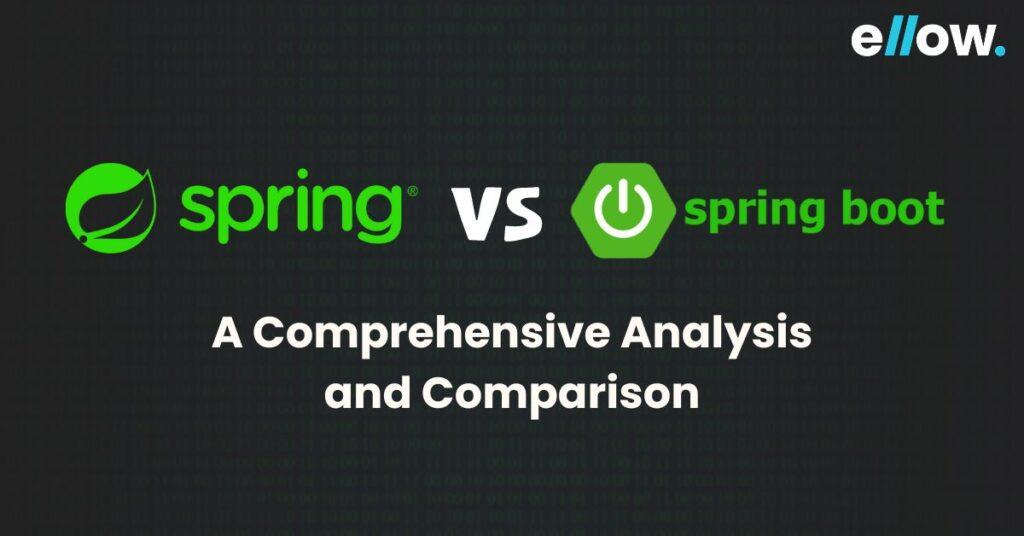Spring and Spring Boot are two widely used frameworks in the Java ecosystem, each offering special advantages for developers. While Spring has long been recognized as a lightweight and powerful framework for web application development, its widespread adoption has brought about challenges in terms of configuration complexity. Recognizing this, the Spring Boot framework emerged as a solution to streamline and simplify the development process.
In this article, we are going to look into a comparison between Java Spring and Spring Boot, shedding light on their key differences. We will explore the scenarios where one framework excels over the other, helping developers make informed decisions when embarking on new projects.
Whether you are a seasoned developer or just starting with Java web development, understanding the nuances between Spring and Spring Boot is crucial for informed decision-making.
According to Statista, “Spring” and “Spring Boot” were among the most favored skills in the Java tech stack worldwide, with “Spring” being preferred by 30.42% of the respondents and “Spring Boot” being chosen by 17.28%, indicating their significant role in the ecosystem.
What Is Spring?
Spring, originally introduced in 2002, is a powerful framework for developing enterprise-level web applications. Built on Java, Kotlin, and Groovy, it aims to simplify software development on the Java EE stack.

Unlike Java EE, Spring provides infrastructural support at the application level, allowing developers to focus on building business logic without worrying about specific deployment environments.
The current version, Spring 5.3.23, released on September 15, 2022, continues to be a popular choice in the software development landscape.
One of the areas where Spring Framework truly shines is in creating enterprise-grade, scalable web applications, particularly those requiring complex backend logic, data handling, and integration with various systems.
Main Features of Spring
- Spring IoC (Inversion of Control): Manages dependencies and configurations, employing Dependency Injection to separate object creation from the object itself.
- Spring MVC (Model-View-Controller): Facilitates the widely-used MVC pattern, dividing code into model, view, and controller for clear separation of application data, user interface, and logic.
- Spring AOP (Aspect Oriented Programming): Enhances functionality by allowing developers to separate concerns, particularly useful for tasks that can’t be neatly handled with traditional object-oriented programming.
- Spring Data JDBC: Provides simplified access to relational databases without the complexities of JPA, executing SQL queries only when necessary.
- Spring Web Flow: Builds on Spring MVC to implement web application flows, saving states of web applications with controlled behavior.
- Spring Security: This integrated framework facilitates the creation of robust authentication and authorization mechanisms, suitable for projects of various sizes
- Spring Test: A module managing Spring IoC containers, dependency injection for test classes, and transaction management for integration tests, facilitating efficient testing.
Use Cases of Spring
Spring is relevant for:
- Developing serverless and scalable microservices-based applications.
- Applications requiring high-security standards on the server side.
- Asynchronous software development.
- Event-driven architecture.
- Batch development for process automation.
Advantages of Spring
- Versatility: Spring’s built-in components cover various areas, from web development to microservices, eliminating the need for a large stack of third-party solutions.
- Fast Development: Compared to Java EE, Spring streamlines development tasks, allowing developers to concentrate on creating business logic.
- Big Community: Supported by a large global developer community, Spring benefits from well-researched documentation and continuous improvement, making it easier to optimize code-writing processes.
- Open Source: Being free and open source, Spring offers a low entry threshold and easy access to experts, which is relatively rare for Java-based solutions.
Drawbacks of Spring
- Time-consuming Configuration: Setting up Spring can be more complex and time-consuming compared to Spring Boot, requiring extensive configuration for each project.
- Additional Skills Required: Spring development often involves numerous XML configurations, demanding developers to possess more extensive skills for project requirements.
What is Spring Boot?
Spring Boot is an extension of the popular Spring framework designed to simplify and accelerate the development of Java-based applications.

Unlike a tool for automatic code generation, Spring Boot acts as a plugin, enhancing project build automation systems. Its inception dates back to April 2014. Spring Boot offers a powerful solution for streamlining Spring-based application development, particularly in the context of microservices and smaller-scale projects.
However, developers should carefully consider their strengths and limitations based on the specific requirements of their applications.
Main Features of Spring Boot
When creating a Spring project, developers typically face time-consuming tasks such as importing modules, configuring third-party libraries, setting up data access objects (DAO), and more. Spring Boot streamlines this process with three key features:
- Dependency Management: Spring Boot packages necessary third-party dependencies into starter packages, tailored for different types of Spring-based applications. This simplifies dependency management for developers.
- Automatic Configuration: The framework automates configuration tasks, including those related to web projects, saving developers from manually specifying settings. While defaults may not always align with preferences, Spring Boot ensures an effective module for each specific task.
- Built-in Servlet Containers: Spring Boot provides built-in servlet containers, simplifying the application process. Developers can quickly create executable JAR files, and the framework takes care of the rest.
Use Cases of Spring Boot
- Ideal for developing stand-alone applications and production-ready Spring apps.
- Well-suited for the development of Java-based projects and web services.
Advantages of Spring Boot
- Development Efficiency: Spring Boot eliminates the need for XML configuration and WAR file deployment, streamlining the development process.
- Production-Ready Tools: The framework comes with a plethora of production-ready tools that are easily customizable, enabling developers to build robust applications.
- Boilerplate Code Reduction: Developers can focus on core business goals as Spring Boot eliminates boilerplate code, which is repetitive code found in multiple places with minimal changes.
- Stand-Alone App Development: Spring Boot is ideal for creating stand-alone applications, making it versatile for various project requirements.
Drawbacks of Spring Boot
- Unused Dependencies: The automatic generation of dependencies might result in numerous unused ones, leading to larger deployment files and potential performance issues.
- Complex Migration: Converting a legacy or existing Spring-based application to Spring Boot can be complex and time-consuming.
- Not Ideal for Large-Scale Projects: Spring Boot may not be the optimal choice for developing large-scale projects, particularly those leaning toward monolithic architectures.
Comparing Configurations: Spring vs Spring Boot
Configuration Differences and Impact on Development
When it comes to project configuration, Spring and Spring Boot take different approaches. Spring’s configuration can be intricate, demanding a considerable amount of code to set up. Spring Boot streamlines this process, condensing complex configurations into just a few lines. This simplicity in Spring Boot enhances development efficiency and reduces the learning curve.
Control Mechanisms in Spring and Spring Boot
In terms of control mechanisms, both Spring and Spring Boot adopt the loosely coupled inversion of control principle. In Spring, developers have more direct control over project flow, while Spring Boot handles project management internally. This distinction means that Spring Boot, by design, manages the project, offering a more guided development experience.
Security Aspects
For security, both frameworks incorporate Spring Security, but Spring Boot simplifies dependency management. While Spring provides a comprehensive set of features for enterprise-level security, Spring Boot makes it easier to handle security-related dependencies by including them in the build configuration. This enhancement streamlines the development of secure applications in Spring Boot.
Scalability and Suitability
In scalability, Spring and Spring Boot have divergent recommendations. Spring, along with JEE, excels in building large-scale enterprise projects. On the other hand, Spring Boot is optimal for creating microservices deployed in Docker containers but is less suitable for extensive and monolithic software solutions. The choice between the two depends on the scale and nature of the project.
Drawbacks and Limitations
Drawbacks of Spring:
- Complexity: Spring projects may involve intricate configurations and structures.
- Parallel Mechanism: Managing parallel processes can be challenging.
- Lack of Specific Guidelines: Developers might face difficulties due to a lack of standardized guidelines.
- XML: Extensive XML configurations can be overwhelming.
Drawbacks of Spring Boot:
- Lack of Control: Spring Boot’s automated processes might limit developer control.
- Complex Processes: Certain aspects of Spring Boot, like autoconfiguration, can be intricate.
- Limited Suitability: It may not be best for large, monolithic applications.
Solving Key Issues: How Spring Boot Addresses Spring’s Challenges
- Autoconfiguration: Spring Boot automates configurations, reducing the need for extensive manual setup.
- Dependency Handling: The framework simplifies dependency management, making it more straightforward for developers.
- Embedded Servers: Spring Boot includes embedded servers, eliminating the manual server setup required in Spring.
Use Case Scenario
When to Choose Spring:
- For large-scale enterprise projects requiring extensive control.
- When specific configurations and customization are crucial.
- When well-established guidelines are preferred.
When Spring Boot Is the Best Option:
- For microservices deployed in Docker containers.
- Rapid development and streamlined configurations are priorities.
- For projects where a guided, opinionated approach to development is acceptable.
Differences: Spring VS Spring Boot
| Parameters | Spring | Spring Boot |
| Where is it used? | Spring is a Java EE framework used to develop applications | The framework, Spring Boot, is mainly used for developing REST APIs, batch processing, web applications, and more |
| Key Feature | Dependency injection is the framework’s primary or most important feature. Dependency Injection (DI) is a design technique that eliminates dependencies from computer code, making it easier to maintain and test the application. | Autoconfiguration is the primary feature of Spring Boot. By removing the need to define some beans that are part of the auto-configuration classes, autoconfiguration can help to speed up and simplify development. |
| Why it’s used | It intends to make Java Enterprise Edition development simpler and more productive for developers. | Spring Boot adds the RAD (Rapid Application Development) function to the Spring framework, allowing for faster development. |
| Application Development | The Spring framework aids in developing a loosely coupled application. | Spring Boot helps with the development of standalone applications. |
| Deployment descriptor | A deployment descriptor is necessary to run a Spring application. | Spring Boot requires no deployment descriptor. |
| Servers dependency | To test the Spring Project, we must explicitly configure the servers in the Spring framework. | Spring Boot includes pre-installed or embedded servers such as Tomcat and Jetty. |
| In-memory database support | The Spring framework does not support in-memory databases. | Spring Boot includes support for in-memory databases like H2. |
| Lines of code | Even for simple tasks, the Spring framework requires far too many lines of code (boilerplate code). | You save time and increase productivity by avoiding boilerplate code with Spring Boot. |
| Configurations | You must manually build configurations in the spring framework. | The default configurations of Spring Boot allow for faster bootstrapping. |
| Dependencies | To build a web app, Spring framework requires several dependencies. | Spring Boot can get the application up and running with just one dependency. Several more dependencies are required during build time and are automatically included in the final archive. |
| HTTP Authentication | HTTP Basic Authentication is used to enable security confirmations in Spring, requiring several dependencies and configurations. | Spring Boot also requires security dependencies but simplifies it by using the dependency spring-boot-starter-secpurity, which automatically adds all applicable dependencies to the classpath |
| XML Configuration | Spring framework requires XML configuration. | In Spring Boot, there is no need for XML configuration. |
| CLI Tools | The Spring framework does not include a command-line interface (CLI) tool for developing and testing applications. | Spring Boot includes a command-line interface (CLI) tool for developing and testing applications. |
| Testing | Due to a large amount of source code, testing is more difficult in Spring than in Spring Boot. | Testing is easier in Spring Boot due to less boilerplate code |
| Plugins | Spring framework, unlike Spring Boot, does not include a plugin for Maven, Gradle, and other build tools. | Spring Boot includes Maven and Gradle build tool plugins, providing features such as packaging executable jars. |
Conclusion
Our exploration of various frameworks has provided valuable insights into making informed decisions for your project. Whether opting for the comprehensive capabilities of Spring or the streamlined development process offered by Spring Boot, the key lies in aligning your project requirements with the strengths of each framework.
For web applications featuring serverless, microservice-based, or event-driven architectures, as well as those with stringent security needs and asynchronous code, Spring emerges as the optimal choice. On the other hand, Spring Boot proves its prowess in stand-alone application development and the creation of production-ready Spring applications.
The decision between Spring and Spring Boot should not be driven by a general preference for one over the other but rather by careful consideration of your project-specific needs. By doing so, you can leverage the strengths of each framework to maximize the success of your development endeavors.
FAQs
What is the primary distinction between Spring and Spring Boot?
Spring is a comprehensive framework suitable for enterprise-level web applications, while Spring Boot is designed for streamlined development, particularly in stand-alone applications and the creation of production-ready Spring apps.
When should I choose Spring over Spring Boot for my project?
Opt for Spring if your project involves enterprise-level web apps with serverless, microservice-based, or event-driven architecture, as well as those with high-security requirements and asynchronous code.
In what scenarios does Spring Boot prove to be more beneficial?
Spring Boot is ideal for stand-alone application development and building production-ready Spring applications, offering a quicker and more straightforward development process.
Can Spring and Spring Boot be used interchangeably, or are they mutually exclusive?
While both frameworks are part of the larger Spring ecosystem, they serve different purposes. However, they can be used together to leverage the strengths of each, depending on the specific needs of your project.
How does understanding the differences between Spring and Spring Boot benefit my project decision-making process?
A clear understanding of the distinctions between Spring and Spring Boot empowers you to align your project requirements with the strengths of each framework, making informed decisions that contribute to the success of your digital product.









